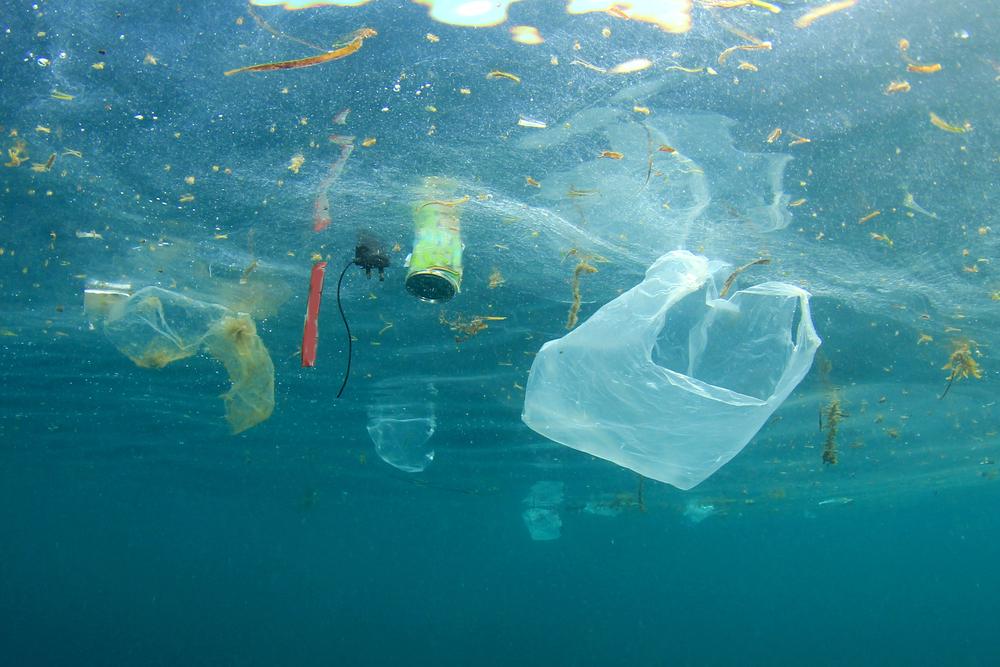
"When it comes to chemical pollution, we can say that our sea is pretty clean," says Oliver Bajt from the Marine Biology Station in Piran, which operates as part of the National Institute of Biology. Mr. Bajt mainly focuses on microplastic pollution in the sea. The concentrations of metals, hydrocarbon compounds, pesticides, and other classic pollutants in our sea, are not that problematic: "We say this despite the presence of intense activities, such as marine traffic, and the densely populated areas by the coast. Considering those things, our sea is very clean," emphasized Bajt.
Only occasionally, and taking into account European standards, there are high concentrations of organotin compounds which enter our sea through ship paints. Years ago, organotin compounds were added to paints to protect the hulls of ships and boats from algae, explains Bajt, adding: "However, the levels are low and the situation is improving. The compounds have been banned for 10 years now, but there are still some traces of it in the sea." The current concentration levels of organotin compounds are slightly higher, considering levels specified by a European directive, but the situation is improving every year.
Treatment plants by the coast take into consideration the mass of summer tourists
The Slovenian sea is, thus, mostly clean of chemical compounds. But when we add waste in evaluating the cleanness of the sea, the picture changes. Entering our sea, along with the waste, are also a lot of organic compounds which become food for algae and phytoplankton, explains Bajt: "Of course, at one point the organic matter can reach the bottom of the sea, start decomposing, and cause a lack of oxygen."
However, ever since the renovation of the two treatment plants by the coast, in Piran and Koper, the situation in this field is also improving, says Bajt. The plants are now almost ten years old, and they not only filter, but also purify the communal waste - a microbiological procedure, in which bacteria decomposes organic matter which is in the water. "The water is purified, not only filtered, and that's why the situation in recent years has significantly improved," said Bajt, stressing that the treatment plants were designed to take into consideration a big increase in population numbers during the summer, and are successfully managing the situation.
A lot of microplastics in the Slovenian sea
When it comes to microplastics and plastic waste, results obtained by the Institute for Water in Ljubljana show a lot of microplastics floating in the sea, warns Bajt: "It's also connected to the conditions in the Bay of Trieste, as we know that there is a closed circulation of water there. The exchange of water with the open sea in the northern Adriatic is limited, and it leads to the piling up of substances in the area – pollutants and microplastics." Currents from the southern parts of the Adriatic Sea also bring plastic, which then floats on the surface of the sea in Slovenia. As a result, the concentration of plastic in Slovenia is much higher than in other parts of the Adriatic.
Touching on the harmfulness of microplastic, Bajt says it's a new field of study and that some results show that plastic releases substances, which are previously added to plastic in order to change its structure and make it softer. Those substances are released only when plastic comes into contact with various organisms. "How much substances are released from plastic? It's a new field of study and research is under way," explains Bajt, adding that microplastics can be found in peeling products, creams and toothpastes. At the same time, it also comes from washing machines, which release synthetic fibers during the washing cycle. Synthetic fibers are considered primary microplastics. Secondary microplastics come from the mechanical process when larger plastic debris degrades into smaller and smaller pieces.
Other organic pollutants also connect with the plastic that floats in the sea. Larger pieces can physically harm marine life. It often happens that plastic ends up in the stomachs of animals, which then cannot eat anymore and die, and some plastic also gets entangled in nets. The smallest pieces can be measured in nanometers, and can reportedly also enter the blood stream and cells of organisms. "But taking that into account, other nanoparticle can also be dangerous," explained Bajt.

































































